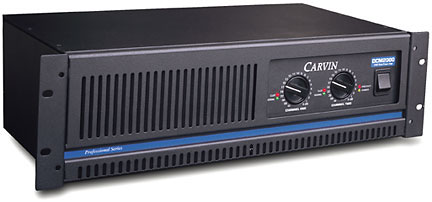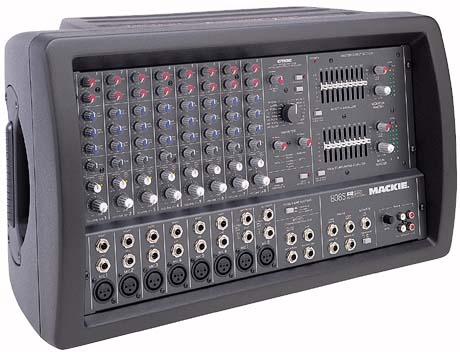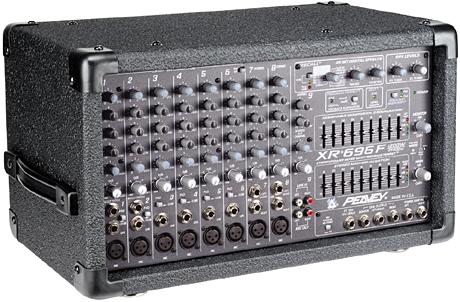Power AmpsAfter all the effects, preamps, and all the little settings needed to tune your sound, a power amp is needed to amplify the signal for the speakers to be heard.
(image from QSC Audio) This is a 3400 Watt RMS power amp. It does not deliver that much power continuously, it depends on the impedance (resistance) of the speakers used. There are two channels on this amp, so the maximum power for stereo for each channel at 2 Ohms is 1700 Watts RMS. In most cases, two channel amps could be bridged so that both channels could be combined into one channel at the maximum rating. This amp is classified as a Class H amplifier. Thermodynamically, this is a great amp for heat reduction; the efficiency is improved so that a larger output could be used in a smaller lighter unit.
(image from QSC Audio) This amp is a 1400 watt RMS amp in Class AB, It is much heavier and produces much more heat, and it takes more components such as capacitors to help bring up the power of the amp. To achieve 1400 watts, the amp must be bridged at 4 Ohms. At 8 Ohms stereo, this unit produces around 280 watts RMS per channel.
(image from Carvin.com) This is a 2500 watt RMS Class AB power amp. Notice how it is much larger to handle the much larger capacitors etc.
(image from Musician's Friend) Some mixers have everything included such as an equalizer, and power amp too. These systems are much lower in price than component systems, but difficulties such as if one part fails, the whole system is down. Also, customization of a great system is lost with all-in-one systems.
(image from Musician's Friend) Why so much power is needed in a power amp? Most speakers are rated below the size of a power amp. There is a concept called headroom. Most power amps could be pushed so far before they start to distort. With a smaller power amp, distortion could do more damage and wear to a speaker than overheating the magnets with an oversized power amp, plus the sound will be much cleaner and the audience could tell a difference how a band sounds with a cleaner system. In most cases, the larger power amps will not be pushed 100%, but some smaller amps need 100%, so a "softer-pushed" larger amp will have a longer life than a "harder-pushed" smaller amp. < Introduction | Mics | Mixers | Effects | Poweramps | Speakers | Works Cited > |




